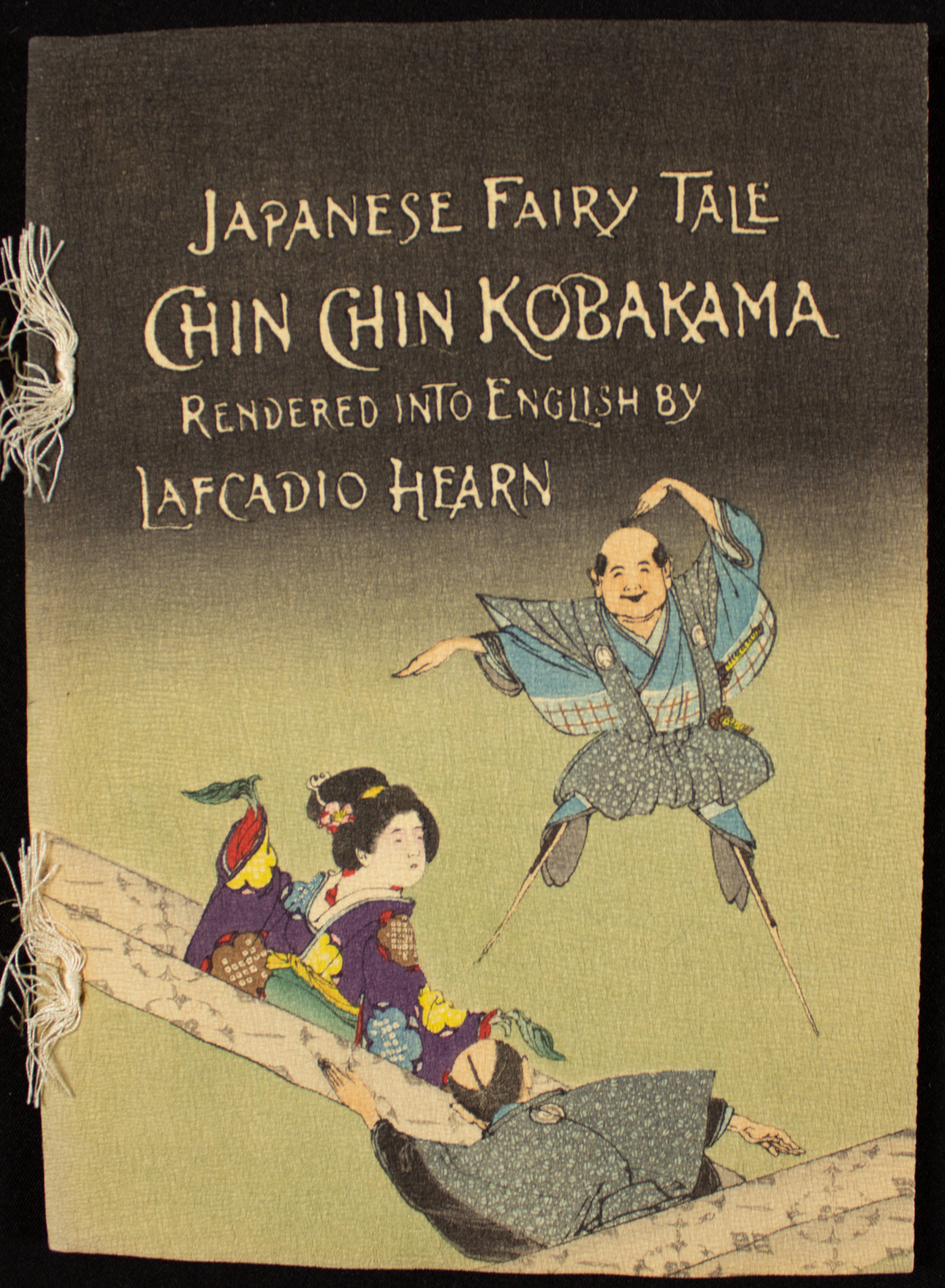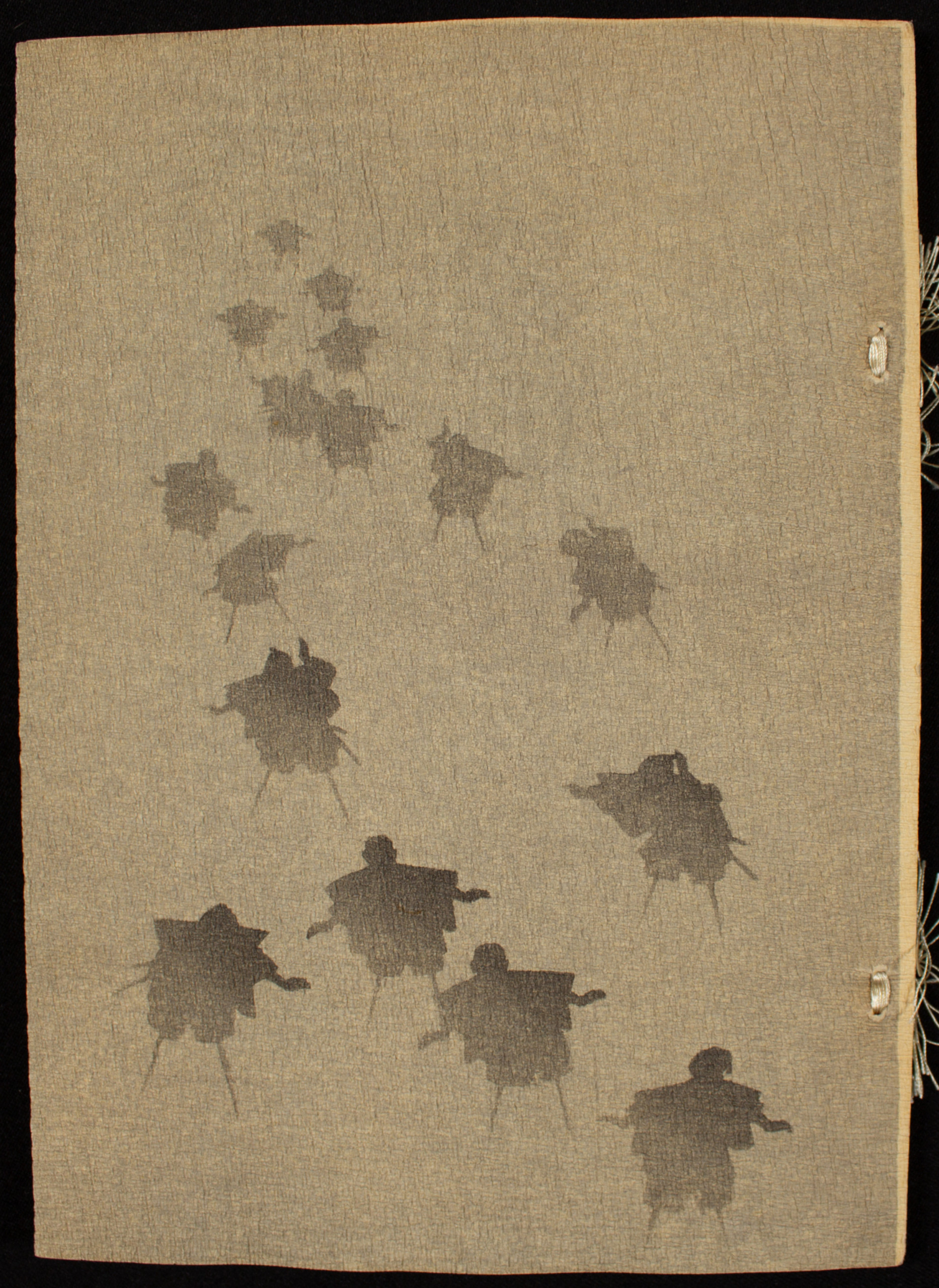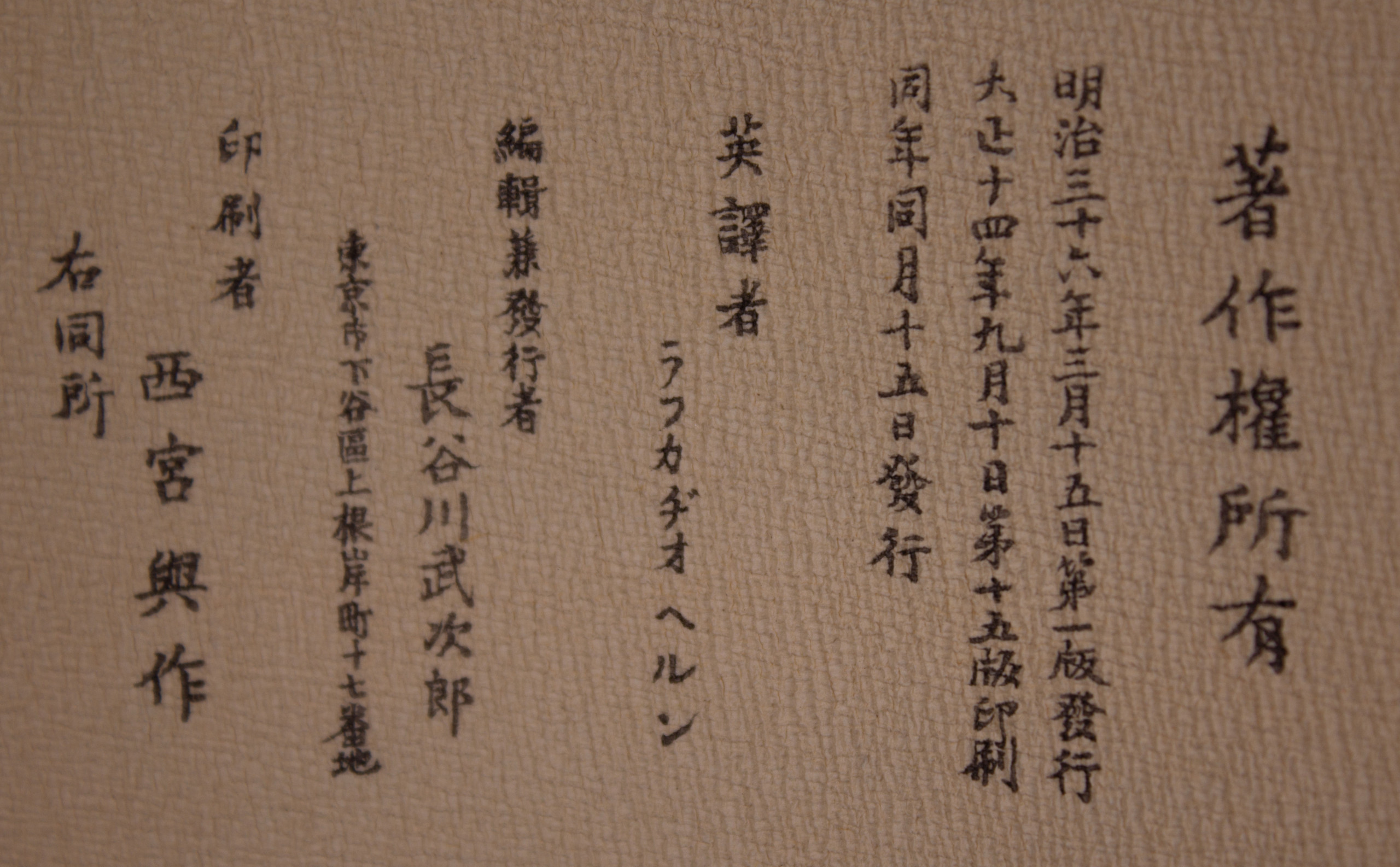Original Publication Date: March 1903 (Meiji 36)
This Printing: September 1925 (Taishō 14)
Binding: 2-hole musubi-toji binding with white silk, extra silk edge and capped at top and bottom
Call Number: TBD
Cataloger: Laura Smith
Publisher: Hasegawa Takejirō
Author/Translator: Lafcadio Hearn
Artist: [Suzuki Kason and Arai Yoshimune]
Printer: Nishinomiya Yosaku
Hearn begins the book with an explanation about Japanese houses having close-fitting floor mats that Japanese people sit, sleep, and eat on, thus making their tidiness very important. Hearn writes about the general and renowned good behavior of Japanese children and their ability to take good care of their toys. He says that few Japanese children are naughty, and the children who don’t take care of the floor mats are teased by fairies, many of which were scared away by “new railways and the telegraph-poles.” The story begins with a pretty and lazy little girl, whose laziness was enabled by her servants doing everything for her. As a beautiful young woman, she marries a brave warrior and lives in his house with few servants, leaving her to do more things for herself, like dressing and grooming. The husband is often away with the army, allowing her to be lazier, and his kind parents do not scold her. One night when her husband is gone, the woman wakes up to odd noises in her room. By the light of the lantern, she sees hundreds of tiny men dressed as warriors dancing around her and holding swords. They stare at her and sing the same song repeatedly in Japanese, which Hearn says in English is “We are the / Chin-chin Kobakama; – / the houre is late; – Sleep, honorable noble darling!” The woman realizes that they are making fun of her, and she tries to catch some, but they are too quick. She fails to drive them away, and they continue to sing and laugh at her. She was terrified all night, until they disappeared in the morning. Ashamed of how embarrassed she was as a warrior’s wife, she tells no one about the tiny fairies. The fairies reappear night after night at two in the morning, or ‘the Hour of the Ox.’ The woman becomes sick from sleep deprivation and fear, and when her husband returns he feels bad for her and gently persuades her to tell him what was happening. When she tells him, he does not laugh at her, and tells her he will hide and wait for them. He hides and watches through a crack in the sliding doors, and eventually they appear and he nearly laughs at them. Upon seeing his frightened wife, he remembers that most paranormal beings are afraid of swords, so he drew his and rushed at them. Immediately, they all turn into toothpicks. The fairies were made of the toothpicks the wife was too lazy to put away and stuck between the floormats. Her husband scolds her, and she is deeply ashamed. A servant takes away all the toothpicks and the tiny men never return. A final story is included at the end, about a lazy little girl who would hide plum-stones between the floormats, which angered the fairies. Tiny women would appear each night and keep her awake, until her mother stayed up one night and struck them, revealing the little girl’s actions and changing her behavior.
N/A


